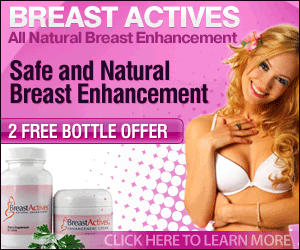Q: What are cosmetics? How are they different from over-the-counter (OTC) drugs?
A: Cosmetics are products people use to cleanse or change the look of the face or body.
Cosmetic products include:
• Skin creams
• Lotions
• Perfumes
• Lipsticks
• Fingernail polishes
• Eye and face make-up products
• Permanent waves
• hair dyes
• Toothpastes
• Deodorants
Unlike drugs, which are used to treat or prevent disease in the body, cosmetics do not change or affect the body's structure or functions.
Q: What's in cosmetics?
A: Fragrances and preservatives are the main ingredients in cosmetics. Fragrances are the most common cause of skin problems. More than 5,000 different kinds are used in products. Products marked “fragrance-free” or “without perfume” means that no fragrances have been added to make the product smell good.
Preservatives in cosmetics are the second most common cause of skin problems.
They prevent bacteria and fungus from growing in the product and protect products from damage caused by air or light. But preservatives can also cause the skin to become irritated and infected.
Some examples of preservatives are:
• Paraben
• Imidazolidinyl urea
• Quaternium-15
• DMDM hydantoin
• Phenoxyethanol
• Formaldehyde
The ingredients below cannot be used, or their use is limited, in cosmetics. They may cause cancer or other serious health problems.
• Bithionol
• Mercury compounds
• Vinyl chloride
• Halogenated salicyanilides
• Zirconium complexes in aerosol sprays
• Chloroform
• Methylene chloride
• Chlorofluorocarbon propellants
• Hexachlorophene
Q: What is the role of the Food and Drug Administration (FDA) in the cosmetic industry?
A: A cosmetic maker can sell products without FDA approval. FDA does not review or approve cosmetics, or their ingredients, before they are sold to the public. But FDA urges cosmetic makers to do whatever tests are needed to prove their products are safe. Cosmetics makers must put a warning statement on the front labels of products that have not been safety testing, which reads, "WARNING—The safety of this product
has not been determined."
FDA does require safety testing for color additives used in cosmetics. Cosmetics may only contain approved and certified colors. You'll find FD&C, D&C, or external D&C listed on cosmeticlabels.
• FD&C – color that can be used only in foods, drugs, and cosmetics
• D&C – color that can be used only in drugs and cosmetics
• External D&C – color that can be used only in drugs applied to the surface of the skin and cosmetics
A cosmetic maker also does not have to report product injuries. FDA collects this information on a voluntary basis only. Cosmetic makers that want to be a part of this program send reports to the FDA.Product recalls are voluntary actions taken by cosmetic makers too. FDA cannot require cosmetics recalls. But FDA does monitor cosmetic makers that do a recall. FDA must first prove in court that a cosmetic product is a danger
or somehow breaks the law before it can be taken off the market.
Q: Are cosmetics safe?
Yes, for the most part. Serious problems from cosmetics are rare. But sometimes problems can happen.
A: The most common injury from cosmetics is from scratching the eye with a mascara wand. Eye infections can result if the scratches go untreated. These infections can lead to ulcers on the cornea (clear covering of the eye), loss of lashes, or even blindness. To play it safe, never try to apply mascara while riding in a car, bus, train, or plane.
Sharing make-up can also lead to serious problems. Cosmetic brushes and sponges pick up bacteria from the skin. And if you moisten brushes with saliva, the problem can be worse. Washing your hands before using make-up will help prevent this problem.
Sleeping while wearing eye make-up can cause problems too. If mascara flakes into your eyes while you sleep, you might wake up with itching, bloodshot
eyes, infections, or eye scratches. So be sure to remove all make-up before going to bed.
Cosmetic products that come in aerosol containers also can be a hazard. For example, it is dangerous to use aerosol hairspray near heat, fire, or while smoking.
Until hairspray is fully dry, it can catch on fire and cause serious burns. Fires related to hairsprays have caused injuries and death. Aerosol sprays or powders also can cause lung damage if they are deeply inhaled into the lungs.
Q: How can I protect myself against the dangers of cosmetics?
A: • Never drive and put on make-up. Not only does this make driving a danger, hitting a bump in the road and scratching your eyeball can cause serious eye injury.
• Never share make-up. Always use a new sponge when trying products at a store. Insist that salespersons clean container openings with alcohol before applying to your skin.
• Keep make-up containers closed tight when not in use.
• Keep make-up out of the sun and heat. Light and heat can kill the preservatives that help to fight bacteria. Don't keep cosmetics in a hot car for a long time.
• Don't use cosmetics if you have an eye infection, such as pinkeye. Throw away any make-up you were using when you first found the problem.
• Never add liquid to a product unless the label tells you to do so.
• Throw away any make-up if the color changes, or it starts to smell.
• Never use aerosol sprays near heat or while smoking, because they can catch on fire.
• Don't deeply inhale hairsprays or powders. This can cause lung damage.
• Avoid color additives that are not approved for use in the eye area, such as "permanent" eyelash tints and kohl (color additive that contains lead salts and is still used in eye cosmetics in other countries). Be sure to keep kohl away from children. It may cause lead poisoning.
Q: What are “cosmeceuticals?”
A: Some products can be both cosmetics and drugs. This may happen when a product has two uses. For example, a shampoo is a cosmetic because it's used to clean the hair. But, an anti-dandruff
treatment is a drug because it's used to treat dandruff. So an antidandruff shampoo is both a cosmetic and a drug.
Other examples are:
• Toothpastes that contain fluoride
• Deodorants that are also antiperspirants
• Moisturizers and make-up that provide sun protection
These products must meet the standards for both cosmetics (color additives) and drugs.
Some cosmetic makers use the term “cosmeceutical” to refer to products that have drug-like benefits. FDA does not recognize this term. A product can be a drug, a cosmetic, or a combination of both. But the term "cosmeceutical" has no meaning under the law.
While drugs are reviewed and approved by FDA, FDA does not approve cosmetics.
If a product acts like a drug, FDA must approve it as a drug.














2 Comments
What you're saying is completely true. I know that everybody must say the same thing, but I just think that you put it in a way that everyone can understand. I'm sure you'll reach so many people with what you've got to say.
ReplyDeleteHey keep posting such good and meaningful articles.
ReplyDelete